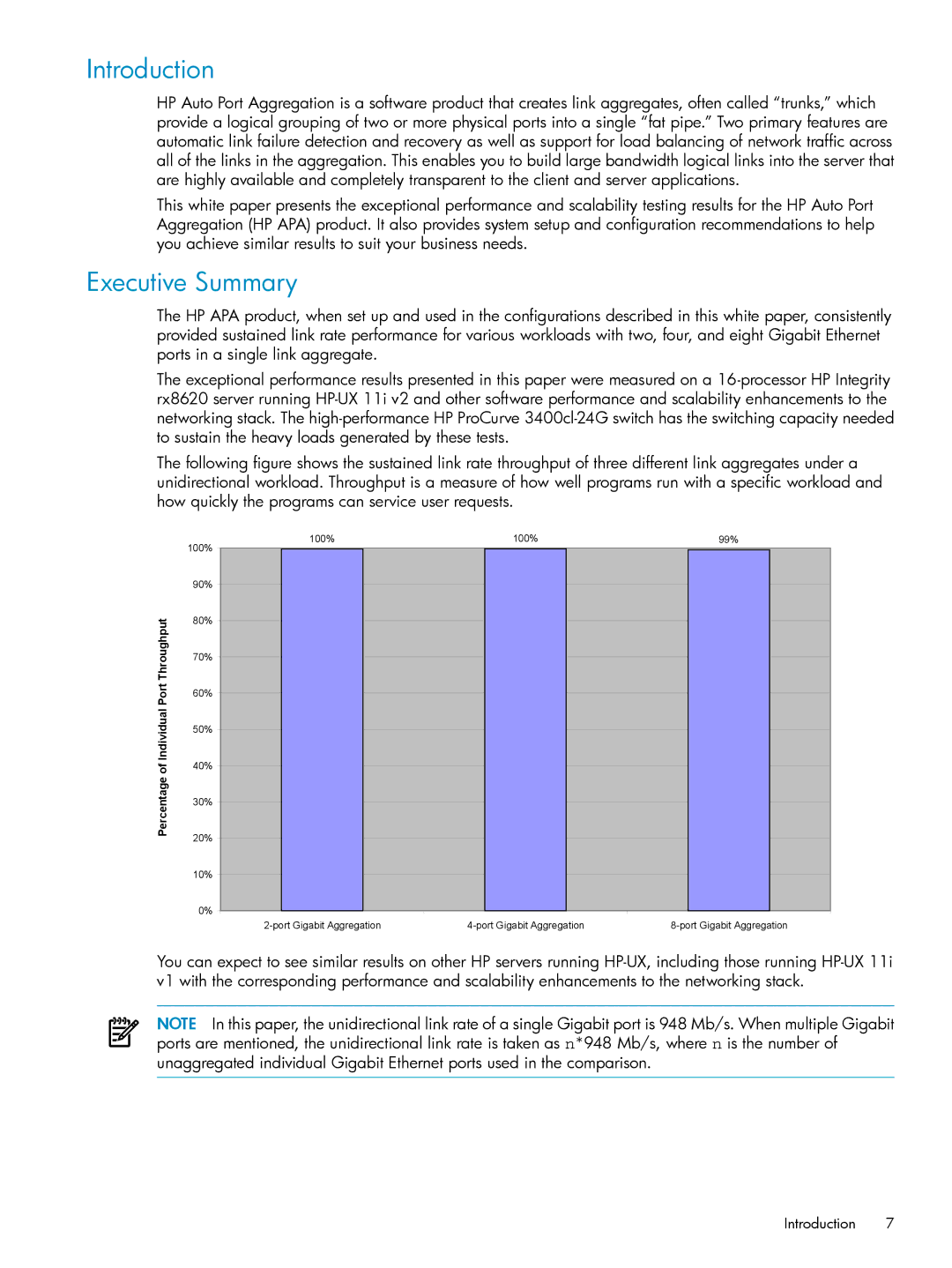
Introduction
HP Auto Port Aggregation is a software product that creates link aggregates, often called “trunks,” which provide a logical grouping of two or more physical ports into a single “fat pipe.” Two primary features are automatic link failure detection and recovery as well as support for load balancing of network traffic across all of the links in the aggregation. This enables you to build large bandwidth logical links into the server that are highly available and completely transparent to the client and server applications.
This white paper presents the exceptional performance and scalability testing results for the HP Auto Port Aggregation (HP APA) product. It also provides system setup and configuration recommendations to help you achieve similar results to suit your business needs.
Executive Summary
The HP APA product, when set up and used in the configurations described in this white paper, consistently provided sustained link rate performance for various workloads with two, four, and eight Gigabit Ethernet ports in a single link aggregate.
The exceptional performance results presented in this paper were measured on a
The following figure shows the sustained link rate throughput of three different link aggregates under a unidirectional workload. Throughput is a measure of how well programs run with a specific workload and how quickly the programs can service user requests.
Percentage of Individual Port Throughput
100% | 100% | 99% |
100% |
|
|
90%
80%
70%
60%
50%
40%
30%
20%
10%
0%
You can expect to see similar results on other HP servers running
NOTE In this paper, the unidirectional link rate of a single Gigabit port is 948 Mb/s. When multiple Gigabit ports are mentioned, the unidirectional link rate is taken as n*948 Mb/s, where n is the number of unaggregated individual Gigabit Ethernet ports used in the comparison.
Introduction 7
